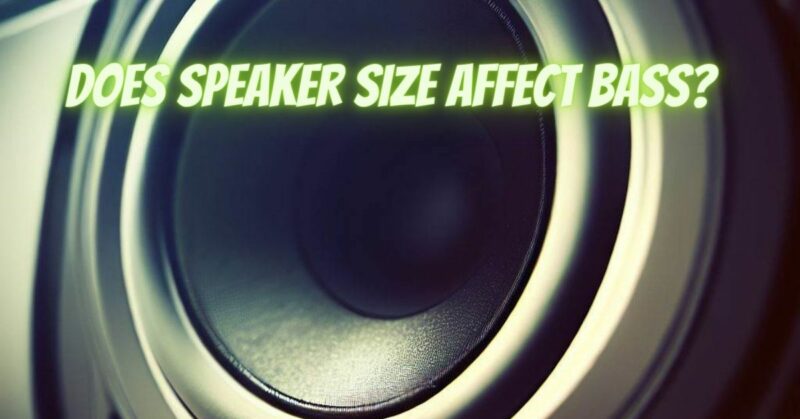The world of audio enthusiasts is replete with debates and discussions surrounding the components that contribute to an exceptional audio experience. One topic that often finds itself at the center of these discussions is the relationship between speaker size and bass performance. Does speaker size really affect bass, or is it just a commonly held misconception? In this comprehensive article, we will delve into the intricacies of speaker design, the physics of sound reproduction, and the role that speaker size plays in the quest for booming bass.
The Basics of Speaker Design:
Before we explore the connection between speaker size and bass response, it’s crucial to understand the fundamental principles of speaker design. A typical speaker consists of several components, including a cone or diaphragm, a voice coil, a magnet, and a suspension system. When an electrical signal is sent through the voice coil, it interacts with the magnetic field, causing the diaphragm to move and generate sound waves.
The Role of Speaker Size:
Speaker size, often measured by the diameter of the cone or driver, is one of the many factors influencing a speaker’s overall performance. However, it’s essential to recognize that bass response is not solely determined by size; it is a multifaceted interplay of various design elements.
- Cone Area:
In general, larger speakers tend to have a greater surface area (cone area), allowing them to move more air. This increased air displacement contributes to the reproduction of lower frequencies, commonly associated with bass. However, it’s crucial to note that simply having a large cone doesn’t guarantee superior bass performance; other factors, such as cone material and design, also come into play.
- Cone Material:
The material of the speaker cone affects its ability to reproduce certain frequencies. While materials like paper, polypropylene, and aluminum are commonly used, their properties vary. Stiffer materials may produce tighter and more controlled bass, while more flexible materials may emphasize a warmer, more resonant sound. Thus, it’s not just the size but the composition of the cone that influences bass response.
- Enclosure Design:
The speaker’s enclosure, or cabinet, also significantly impacts bass performance. Different enclosure types, such as ported or sealed designs, can affect the way low frequencies are reproduced. A well-designed enclosure complements the speaker’s size and characteristics, optimizing bass response.
- Amplification and Power Handling:
The amplifier’s power and the speaker’s ability to handle that power play a crucial role in bass reproduction. A powerful amplifier matched with a speaker capable of handling the associated power levels can contribute to improved bass performance, regardless of speaker size.
Dispelling the Myth:
While larger speakers generally have the potential to move more air and reproduce lower frequencies, it is essential to recognize that size is just one piece of the puzzle. The myth that bigger speakers always equal better bass oversimplifies the complex relationship between various design elements. Small speakers, when engineered with precision and equipped with advanced technologies, can deliver impressive bass response.
In the quest for exceptional audio quality, understanding the nuanced relationship between speaker size and bass response is crucial. While size does matter to some extent, it is just one variable among many that contribute to a speaker’s overall performance. Audiophiles and enthusiasts should consider a speaker’s design, cone material, enclosure type, and power handling capabilities when evaluating its bass performance. In the world of audio, the pursuit of the perfect bass is an intricate journey that requires a holistic understanding of speaker design and a discerning ear for nuanced sound reproduction.


